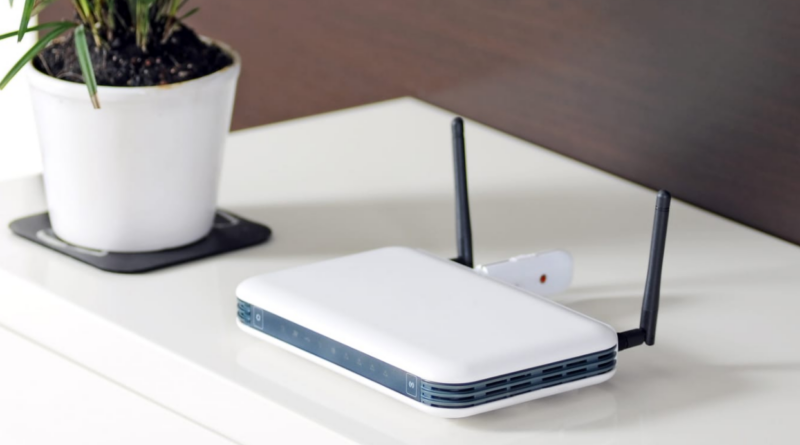7 Effective Techniques to Enhance Your Wi-Fi Router Speed
Table of Contents
Slow Wi-Fi can be exasperating. No one relishes waiting for a webpage to load or a video to buffer. If sluggish speeds plague your Wi-Fi experience, several strategies can uplift your router’s speed. Read on to explore how you can optimize your router to boost its speed and performance.
What Causes Wi-Fi Routers to Run Slowly?
The slow performance of your router might stem from interference caused by other devices. Here’s how you can elevate your Wi-Fi router speed:
- Identify Interfering Devices:
Assess the devices connected to your router. Disconnect some devices to mitigate potential interference if you have multiple devices connected simultaneously. - Optimal Placement:
Relocate your router to a different spot. Positioning your router strategically can significantly impact its performance. - Channel Optimization:
Adjust the router’s channel settings. In areas with numerous wireless networks, changing the channel might alleviate interference issues. - Firmware Upgrade:
Enhance your router’s performance by updating its firmware, especially if it’s an older model. Firmware upgrades often boost overall functionality. - Enhanced Antenna Quality:
Consider investing in a higher-quality antenna for your router. Improved antennas can enhance signal strength and stability.

Quick Restart for Immediate Results
Begin with a quick check of all plugged-in cords. If secure, unplug and re-plug them; this seemingly trivial action often yields positive results.
If this doesn’t resolve the issue, perform a router restart. Like computers, routers benefit from periodic reboots. Unplug the power cord, wait around 30 seconds, and then reconnect it.
Still, encountering issues? Next, assess possible interference from other devices.
Optimal Placement Matters
To optimize your home Wi-Fi, the router’s placement is crucial:
- Central Location: Place the router centrally within your home or office to ensure robust signal strength for all connected devices.
- Avoid Obstacles: Steer clear of placing the router near obstructive elements like walls or windows that can impede the signal.
- Multi-Floor Homes: For multi-floor residences, positioning the router on the first floor aids in signal coverage throughout the house.
- Interference Minimization: Keep the router away from electronic devices that might cause interference, such as microwaves or cordless phones.
Channel Optimization using Wi-Fi Analyzers
For enhanced network reliability and speed, utilize Wi-Fi analyzer tools like WiFi Analyzer or Opensignal to determine the optimal channel for your router. Here’s a simple guide:
- Download the App: Install a Wi-Fi analyzer app on your smartphone or tablet.
- Scan Networks: Scan for available networks using the app.
- Assess Channel Usage: Identify less congested channels to switch and observe potential performance improvements.
Firmware Upgrade for Enhanced Performance
Upgrade your router’s firmware to leverage the latest enhancements and bug fixes. This simple process involves visiting the manufacturer’s website, downloading the updated firmware, and uploading it via your router’s settings. Consult your router’s manual for specific instructions.
Following the firmware update, expect noticeable improvements in Wi-Fi speed. If not, several other methods can further optimize your signal strength.
Streamlining Device Connections
A surplus of connected devices can hinder internet speed. Limiting device connections can optimize Wi-Fi router performance:
- Bandwidth Monitoring: Use Wi-Fi analyzer apps to identify bandwidth-consuming devices.
- Guest Network: Create a separate guest network with limited connections for visitors.
- Parental Controls: Regulate internet access duration for specific devices.
- Unplugging Unused Devices: Disconnect inactive devices from the router.
- Scheduled Internet Access: Allocate specific time frames for device internet usage, preventing simultaneous connections.
Embrace Wired Connections
For superior speed and reliability, wired connections surpass wireless ones. Maximize wired connections with these tips:
- Firmware Updates: Keep router firmware updated for enhanced performance.
- High-Quality Cables: Use top-grade Ethernet cables like CAT8 for optimal performance; however, Cat5e or Cat5 also suffice.
- Direct Connections: Connect multiple devices directly to the router using Ethernet cables to ensure dedicated bandwidth.
Antenna Positioning for Optimal Signal
Enhance Wi-Fi signal strength by adjusting your router’s antennas. Positioning them correctly can significantly bolster your signal:
- Optimal Antenna Placement: Adjust both antennas upward for improved signal strength.
- Trial and Error: Experiment with different antenna angles until achieving the strongest signal possible.
Implementing these strategies can substantially elevate your Wi-Fi router speed and overall connectivity. Experiment with these methods to enhance your internet experience and achieve optimal performance.
Conclusion: Enhanced Wi-Fi Experience
By implementing these seven effective strategies, you can significantly amplify your Wi-Fi router’s speed and performance. From identifying interfering devices to optimizing router placement and channels, each method plays a pivotal role in refining your internet experience.
The simple act of rebooting your router or upgrading its firmware can yield immediate improvements. Additionally, managing connected devices, favoring wired connections, and optimizing antenna positioning contribute to a more robust and reliable Wi-Fi network.
Remember, these steps are not just about boosting speed but also enhancing the stability and consistency of your internet connection. Experiment with these techniques to tailor your router’s settings for optimal performance, ensuring smoother browsing, faster downloads, and seamless streaming experiences.
Elevate your Wi-Fi experience today by applying these techniques and transforming your router into a high-speed powerhouse that meets all your connectivity needs. Cheers to a faster, more reliable internet connection for all your online endeavors!
What are some common reasons for a slow Wi-Fi connection?
The article mentions interference from other devices, suboptimal router placement, channel congestion, outdated firmware, and poor-quality antennas as potential reasons for slow Wi-Fi speeds.
How can one improve Wi-Fi router speed by optimizing router placement?
By placing the router in a central location, away from obstacles like walls or windows, and minimizing interference from electronic devices such as microwaves or cordless phones, one can enhance Wi-Fi router speed.
What is the significance of using a Wi-Fi analyzer?
Wi-Fi analyzers help in identifying less congested channels for the router, optimizing network performance, and reducing interference, thereby improving Wi-Fi speed and reliability.
How does upgrading the router’s firmware contribute to enhancing Wi-Fi speed?
Router firmware upgrades often include bug fixes, performance enhancements, and improved stability. Updating firmware can significantly boost a router’s speed and overall performance.
What are some strategies suggested to limit the number of devices connected to the router for optimal speed?
Using Wi-Fi analyzer apps to monitor bandwidth usage, creating a separate guest network with limited connections, implementing parental controls, unplugging unused devices, and scheduling internet access are recommended to manage and limit connected devices.
How does using wired connections instead of wireless ones impact Wi-Fi speed?
Wired connections offer superior speed and reliability compared to wireless connections. Utilizing high-quality Ethernet cables and directly connecting devices to the router ensures dedicated bandwidth, enhancing overall Wi-Fi speed.


